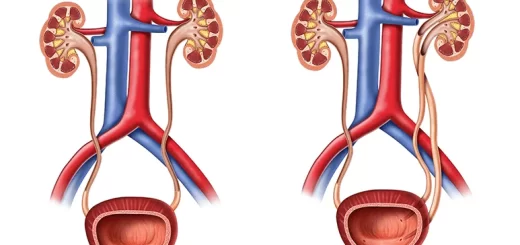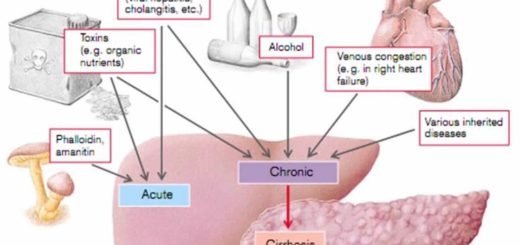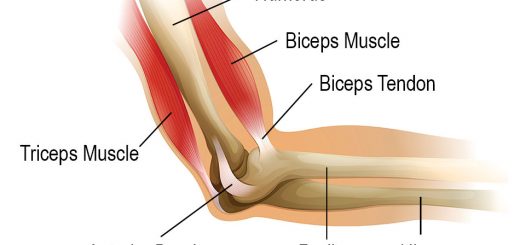Interventricular septum, Blood supply, valves and Surface anatomy of the heart
Interventricular septum has an oblique position between the two ventricles. It is directed posteriorly and to the right from the sternocostal surface to the diaphragmatic surface. It is bulging towards the right ventricle where it has a convex right surface and a concave left surface. So, the lumen of right ventricle is semilunar or crescentic while that of the left ventricle is circular in cross-section.
Blood supply of the heart
Arterial supply of the heart (coronary circulation):
The right coronary artery
It is a branch from the anterior sinus of the ascending aorta. It lies between the pulmonary trunk and the right auricle. It descends along the anterior part of the coronary sulcus to the inferior border of the heart where it continues in the inferior part of the coronary sulcus. It ends by anastomosing with the circumflex branch of the left coronary artery. It gives two main branches:
- The posterior interventricular artery runs in the posterior interventricular groove together with the middle cardiac vein.
- Right marginal artery runs parallel to the inferior border of the heart.
Other minor branches:
- Vascular twigs (vasa vasorum) to the nearby great vessels.
- Right conus artery (supplies the pulmonary infundibulum).
- Artery of S.A. node.
- Right anterior and posterior atrial arteries.
- Right anterior and posterior ventricular arteries.
The left coronary artery
It is a branch from the left posterior sinus of the ascending aorta. It lies between the pulmonary trunk and the left auricle. It immediately divides into:
- The anterior interventricular artery passes through the anterior interventricular groove together with a great cardiac vein. It reaches the apex of the heart then it curves inferiorly and anastomoses with the posterior interventricular branch of the right coronary artery.
- The circumflex branch is considered as the continuation of the left coronary artery. It passes to the left in the coronary sulcus where it anastomosis with the termination of the right coronary artery.
Other minor branches:
- Vascular twigs (vasa vasorum) to the nearby great vessels.
- Left conus artery (supplies the pulmonary infundibulum).
- Left marginal artery (arises from the circumflex artery and runs close to the left border of the heart).
- Atrial and ventricular branches.
Venous drainage of the heart
Coronary sinus
It is a wide vein that lies between the left atrium and the left ventricle posteriorly. It is about 4 cm long. It receives veins from the heart and then opens into the right atrium. The veins that drain into the coronary sinus are:
- Great cardiac vein: This vein lies in the anterior interventricular groove. It ascends from the apex in the anterior interventricular groove to reach the coronary sulcus where it runs with the circumflex artery to open in the coronary sinus.
- Middle cardiac vein: This vein lies in the posterior interventricular groove. It runs from the apex in the posterior interventricular groove to join the coronary sinus near its opening in the right atrium.
- Small cardiac vein: This vein runs along the lower border of the heart from the left to the right. Then, it curves posteriorly in the coronary sulcus to join the coronary sinus near its opening in the right atrium.
- Oblique vein of the left artium: It is a small vein that descends obliquely on the back of the left atrium to join the coronary sinus.
- Posterior vein of the left ventricle: It runs on the diaphragmatic surface of left ventricle to end in the coronary sinus.
Anterior cardiac veins
One or two veins drain the anterior wall of the right ventricle and open directly into the right atrium.
Venae Cordis Minimae
They are small veins that begin in the myocardium of any chamber and opens into this chamber.
Surface anatomy of the heart
Surface anatomy of the borders of the heart: It is the location of the heart from the surface of the body. It is represented by a quadrilateral shape between the following 4 points:
- Point 1: Lower border of the left second costal cartilage 1.5 inches from the middle line.
- Point 2: Upper border of the right third costal cartilage one inch from the middle line.
- Point 3: Right sixth costal cartilage half an inch from the middle line.
- Point 4: Left fifth intercostal space 3.5 inches from the middle line.
How to locate the borders of the heart?
- The upper border is represented by a straight line from point 1 to point 2.
- The right border is represented by a curved line from point 2 to point 3.
- The lower border is represented by a straight line (passing by the xiphisternal joint) from point 3 to point 4.
- The left border of the heart is represented by a curved line from point 4 to point 1.
The surface anatomy of the apex of the heart is the left fifth intercostal space 3.5 inches from the middle line i.e. point 4.
Surface anatomy of the valves of the heart
These valves lie behind the left border of the sternum except the tricuspid valve which lies in the middle line.
- Pulmonary valve: Behind the left border of the sternum opposite the 3rd costal cartilage.
- Aortic valve: Behind the left border of the sternum opposite the 3rd intercostal space.
- Mitral valve: Behind the left border of the sternum opposite the 4th costal cartilage. Tricuspid valve: In the middle line opposite to the 4th intercostals space.
Heart & Pericardium structure, Abnormalities & Development of the heart
Heart function, structure, Valves, Borders, Chambers & Surfaces
Thoracic vertebrae structure, function, Chest wall muscles & Intercostal arteries
Anatomy of the cardiovascular system, Thoracic cage function, structure & anatomy



